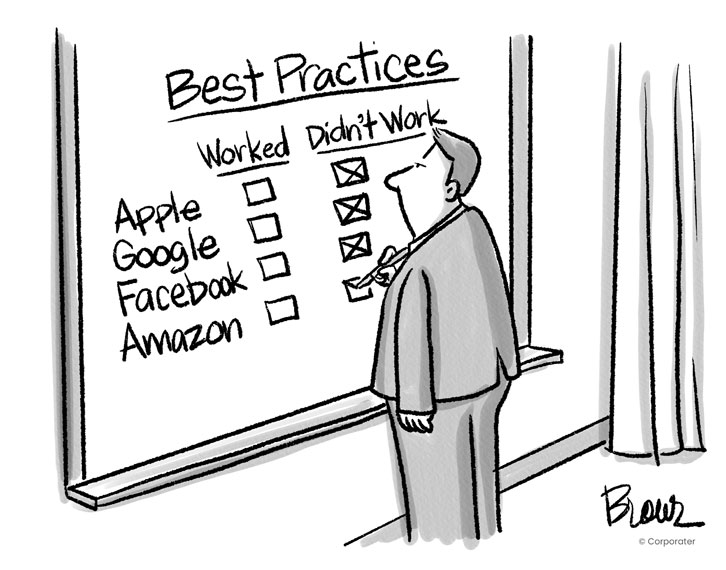
Back in the early 1980s, when we were both fresh-faced college students, all the “cool kids” in class were toting copies of In Search of Excellence, the Peters and Waterman tome destined to become the first true business blockbuster and a must-have on the credenza of every credible executive. The mere ability to parrot a few choice passages or tell the simplified tale of one of its exemplary companies awarded one with a certain cachet and prestige both in and out of class. Later, when we were in corporate jobs, it was Built to Last, then Reengineering the Corporation, and later Good to Great. There were many others as well.
Reflecting back on all those many pages, what stands out are not only the lessons imparted by the gurus of each successive age, but the repetition in the use of certain companies to “prove” their particular theory of choice. It didn’t matter whether it was reengineering, strategy development, lean thinking, or enterprise performance management. Regardless of the principle, the same companies were used again and again. When we were starting out, writers were erecting statues in ink for the likes of Atari and Xerox. Later it was Enron and Dell (and we know what happened to Enron), and now the darlings appear to be (among others) Apple, Google, Amazon, and Facebook.
Amazon, Apple, Google, Facebook and the other stars shining in the business galaxy today are unquestionably successful companies, but it’s both dangerous and unfair to emulate them with singular devotion and expect the rewards to suddenly rain down on you. All of these companies perform a specific combination of activities that act together in a synergistic way to drive the execution of their strategies. If we could all copy everything they do, we would, but it’s obviously not that simple. Nor should you want to follow blindly what others do.
Here are three healthy ways to keep an eye on other organizations, without blind devotion to them:
- Monitor but don’t necessarily copy
We hear it every day: things are changing more rapidly than ever. Therefore, it’s incumbent on every business to keep track of changes in all facets of life: technology, demographics, socio-political, and so on. If you see a company doing cool and innovative things, by all means examine it, but think carefully about your particular situation before adopting their approach. - Determine where you need help
Chances are that some areas of your business require more pressing attention than others. If one function in particular is struggling, look to the “stars” of that field and consider adopting any proven best practices. For example, Walmart is a good place to start if you’re plagued with supply chain and logistics woes. - Run small experiments
Before investing in a full implementation of what seems to be working at another company, try it as a pilot project within your firm. Document the experience and determine whether a wider rollout is merited.
There is an enormous gap between admiring and learning from a company versus trying to copy its success. It’s healthy and productive to learn from others, but you still need to apply a liberal dose of homegrown wisdom and know-how forged in the battles that shaped your unique culture if you hope to achieve success yourself.

